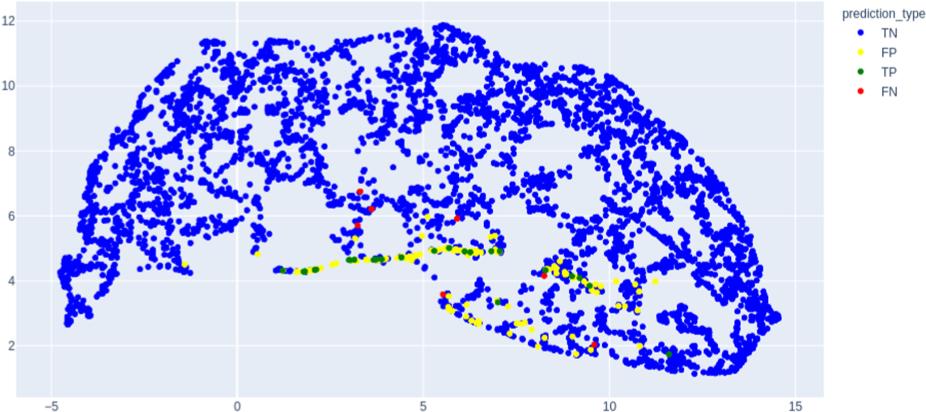
UMAP of the predictions of the ensemble model, applied on the test set (20% of the data), colored by their correctness. Labels: TN - True Negative; FP - False Positive; TP - True Positive; FN - False Negative.
Coronal mass ejections are the most important space weather phenomena, being associated with large geomagnetic storms, and having the potential to cause disturbances to telecommunications, satellite network disruptions, and power grid damage and failures. Thus, considering these storms' potential effects on human activities, accurate forecasts of the geoeffectiveness of CMEs are paramount. This work focuses on experimenting with different machine-learning methods trained on data sets of close-to-Sun CMEs, to estimate whether such a newly erupting ejection has the potential to induce geomagnetic activity. We developed classification models using a variety of machine learning approaches. At this time, we limited our forecast to exclusively use solar onset parameters, to ensure extended warning times. We discuss the main challenges of this task and show that adequate predictions can be achieved with these models.